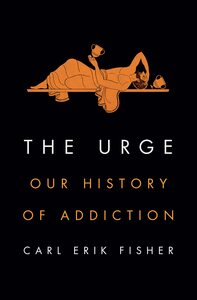You need to sign in or sign up before continuing.
Take a photo of a barcode or cover
informative
medium-paced
The author, an addiction psychiatrist who suffers from addiction, gives a historical view of addiction mixed with his own addiction arc. The overall message seems to be that addiction is part of the human condition.
“There is a recurrent and selective amnesia that the greatest drug harms -- including addiction -- are almost always caused by legal products: morphine and cocaine in the nineteenth century, stimulants and sedatives in the mid-twentieth century, opioids more recently, and, throughout and always, alcohol and tobacco.”
He shows compassion for substance abusers while taking us through the historical approaches that have been used to understand, control and treat addiction over time. This last includes the relatively contemporary idea of “recovery,” which suggests that it is possible, with the right medications, such as naloxone, buprenorphine or methadone, and thoughtful care, to break its hold.
Of note is that "addiction does not proceed inevitably from use. Most people who use drugs — including crack, methamphetamine and heroin — do not develop significant problems. In studies spanning decades, no more than 10 to 30 percent of people who use drugs develop significant substance use disorders. Drugs are not ‘addictive’ in themselves; they don’t cause addictions in isolation.” He also makes reference to high rate of herion use in Vietnam which did not translate to a pandemic of use when they returned to civilian life.
“There is a recurrent and selective amnesia that the greatest drug harms -- including addiction -- are almost always caused by legal products: morphine and cocaine in the nineteenth century, stimulants and sedatives in the mid-twentieth century, opioids more recently, and, throughout and always, alcohol and tobacco.”
He shows compassion for substance abusers while taking us through the historical approaches that have been used to understand, control and treat addiction over time. This last includes the relatively contemporary idea of “recovery,” which suggests that it is possible, with the right medications, such as naloxone, buprenorphine or methadone, and thoughtful care, to break its hold.
Of note is that "addiction does not proceed inevitably from use. Most people who use drugs — including crack, methamphetamine and heroin — do not develop significant problems. In studies spanning decades, no more than 10 to 30 percent of people who use drugs develop significant substance use disorders. Drugs are not ‘addictive’ in themselves; they don’t cause addictions in isolation.” He also makes reference to high rate of herion use in Vietnam which did not translate to a pandemic of use when they returned to civilian life.
informative
reflective
medium-paced
3.75⭐️
The history of addiction as told by someone who has suffered addiction while trying to learn to treat people with addiction.
I really enjoyed this book but felt the pacing could have been quicker and the subject matter a bit more organized.
I would definitely recommend this book to a person who struggles with addiction or you love someone who does. It’s educational and refreshing
The history of addiction as told by someone who has suffered addiction while trying to learn to treat people with addiction.
I really enjoyed this book but felt the pacing could have been quicker and the subject matter a bit more organized.
I would definitely recommend this book to a person who struggles with addiction or you love someone who does. It’s educational and refreshing
informative
inspiring
reflective
tense
medium-paced
challenging
dark
emotional
hopeful
informative
inspiring
reflective
sad
tense
medium-paced
adventurous
challenging
informative
reflective
relaxing
medium-paced
challenging
informative
inspiring
medium-paced
Addictions are not simple, and I have learned much from this well researched history of addiction.
informative
slow-paced
informative
reflective
slow-paced



